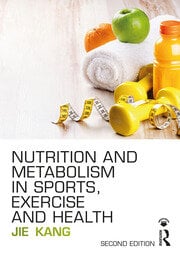ABSTRACT
Two main macronutrients provide energy for replenishing ATP during exercise are muscle and liver glycogen and triglycerides within adipose tissue and exercising muscle. An increase in liver glucose output may be brought about by an enhancement of glycogenolysis and gluconeogenesis. During prolonged exercise, carbohydrates such as muscle glycogen and blood glucose derived from liver glycogenolysis are the primary energy substrates. Liver glycogen degradation is mainly regulated by insulin and glucagon, the two hormones that work against each other in regulating blood glucose concentrations. Lipolysis is modulated by the hormones epinephrine and norepinephrine. There are three principal sources of amino acids for energy metabolism is dietary protein, free amino acid pool and endogenous tissue protein. Protein synthesis and degradation are mainly regulated by hormonal secretion, which can be influenced under many circumstances such as exercise, stress, and dietary feeding.


